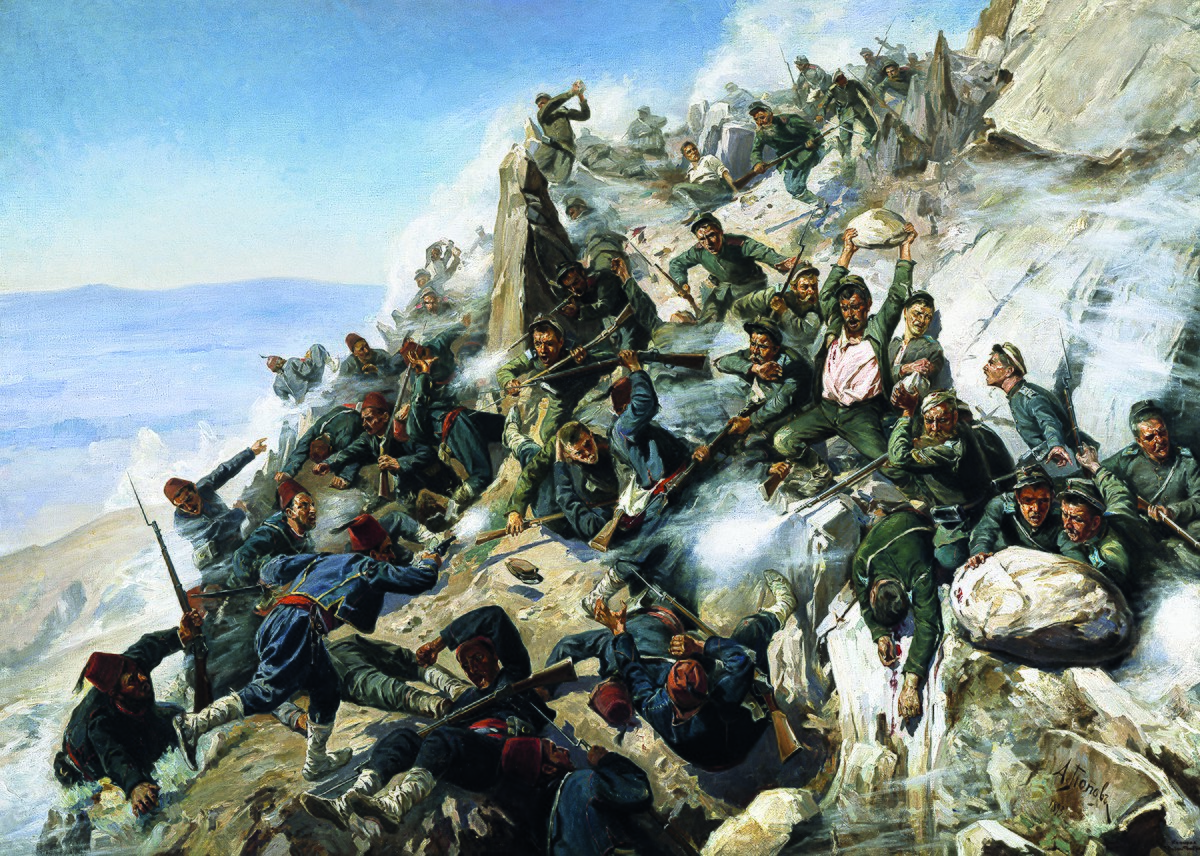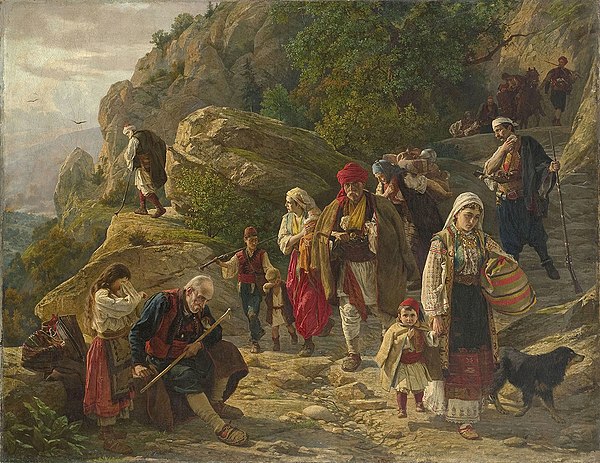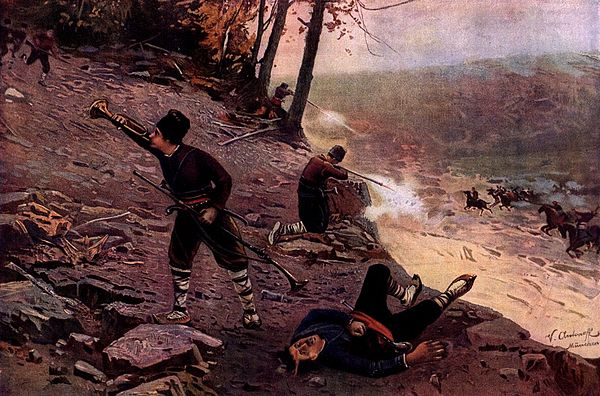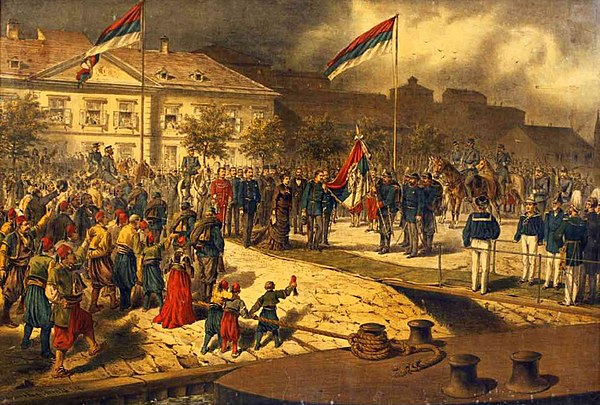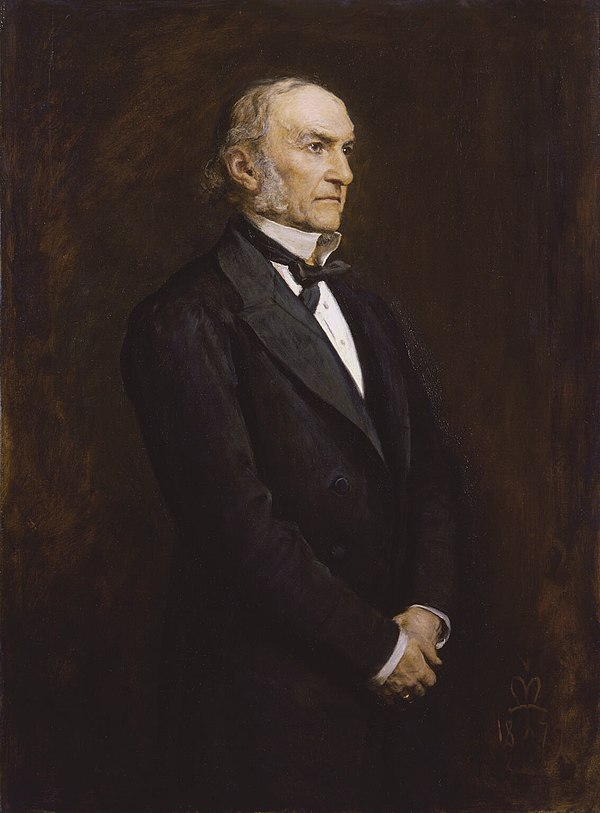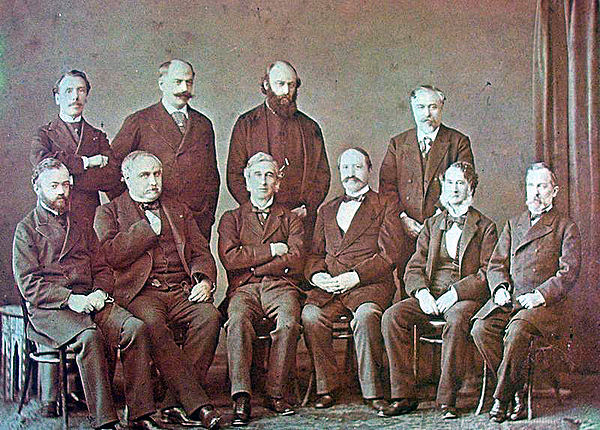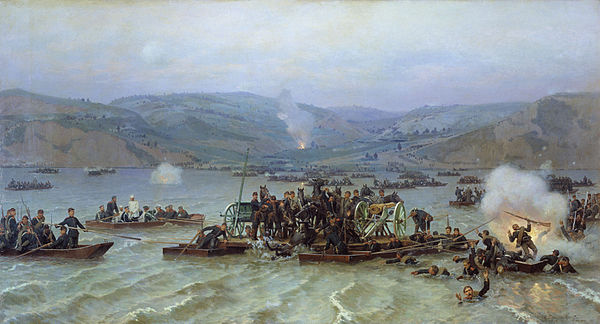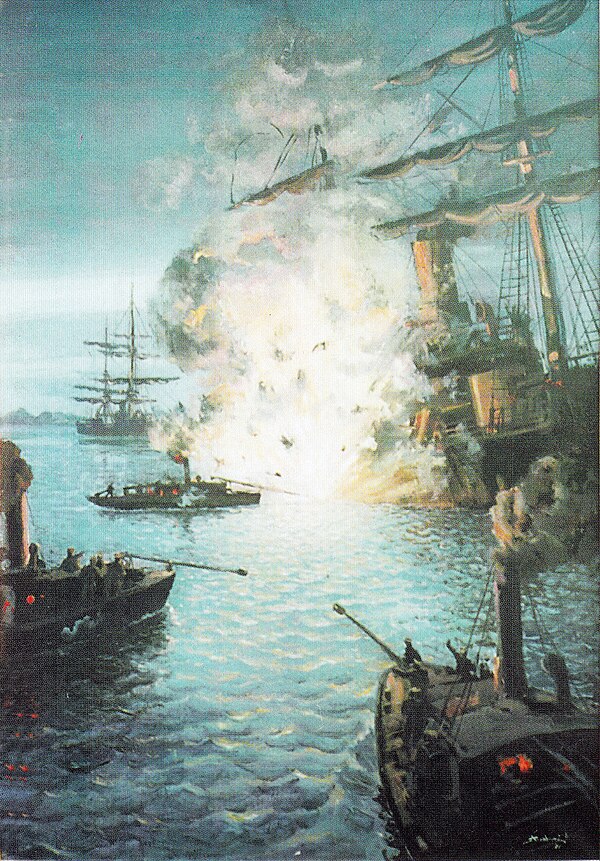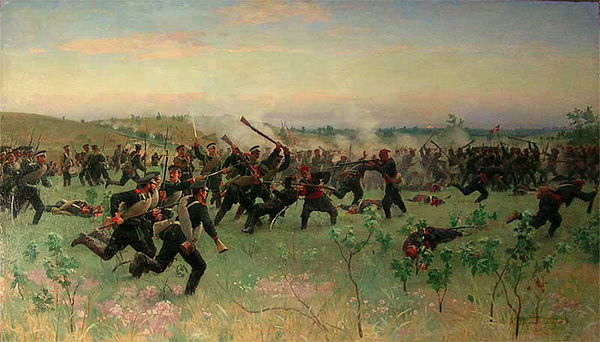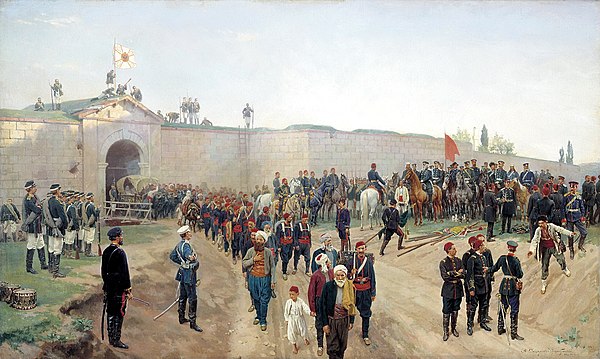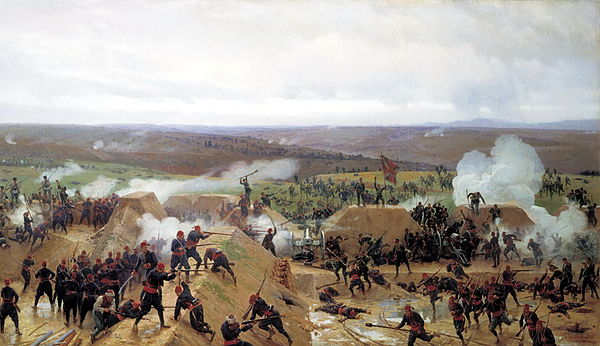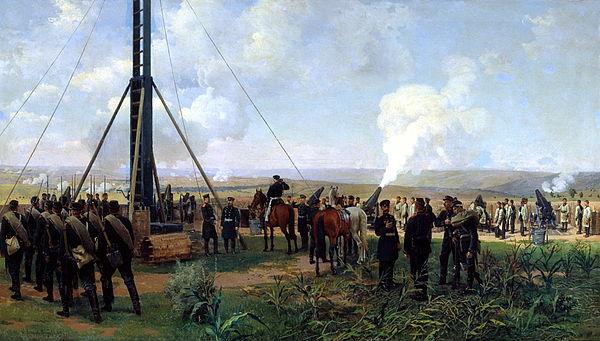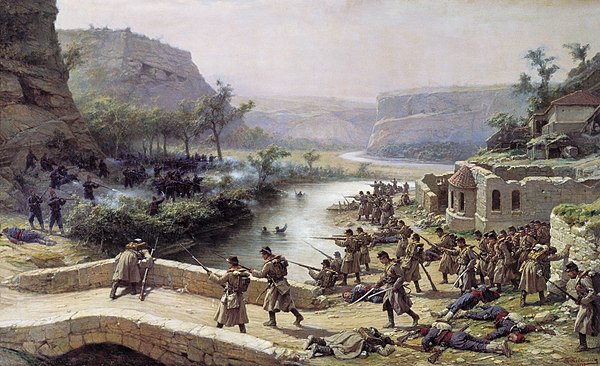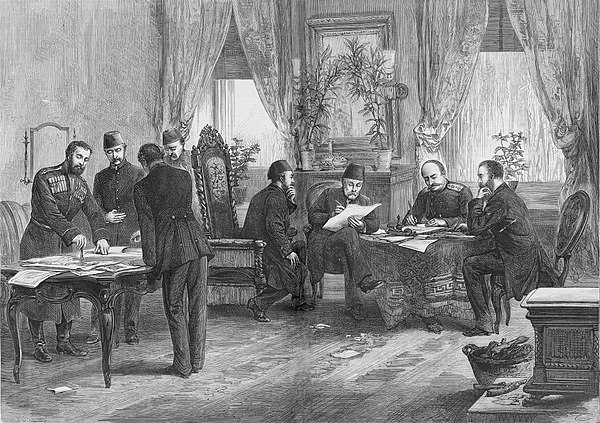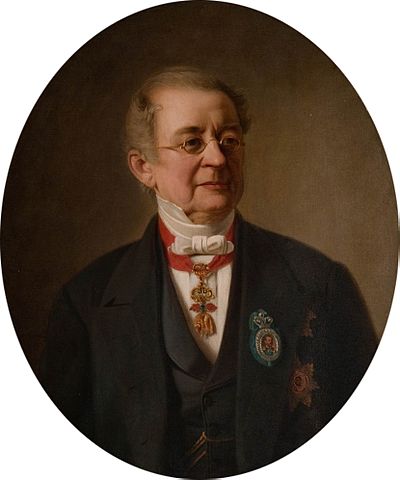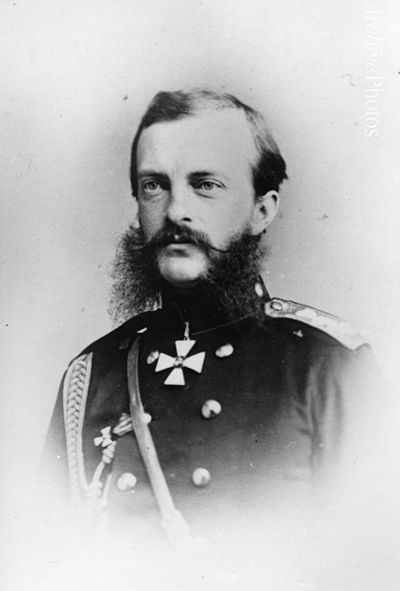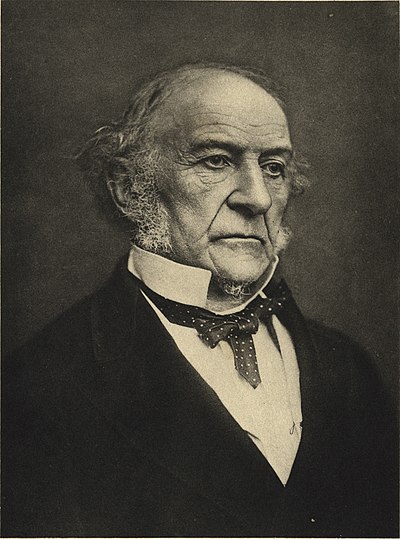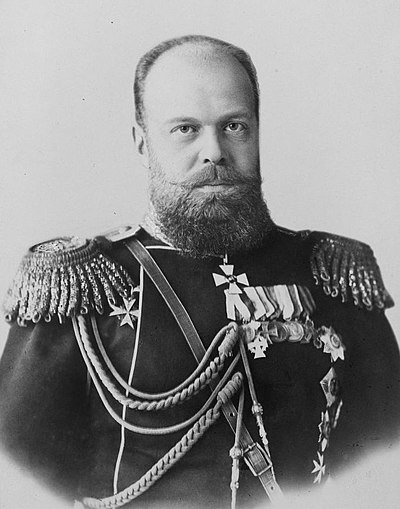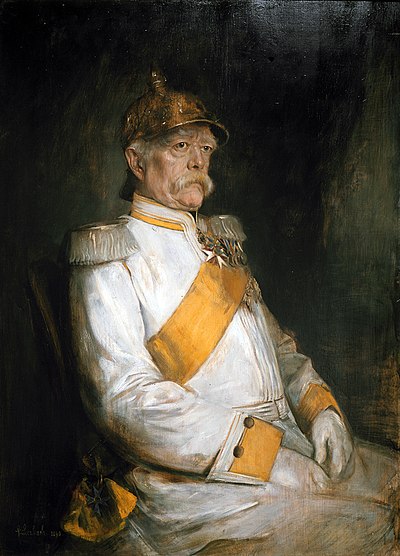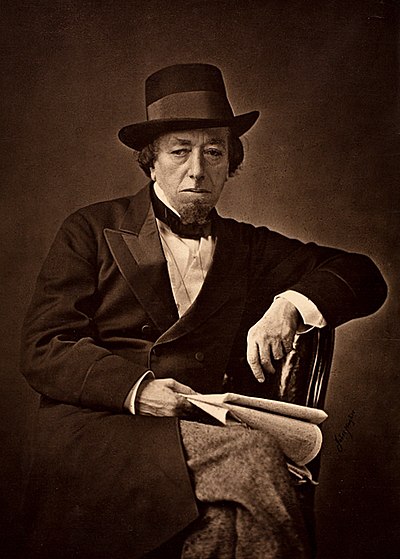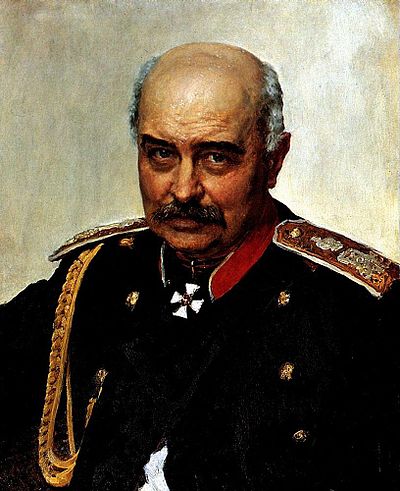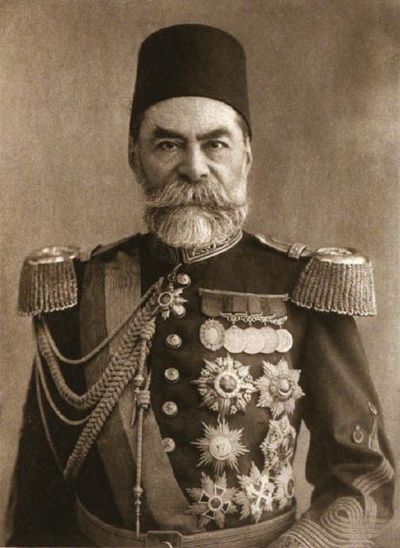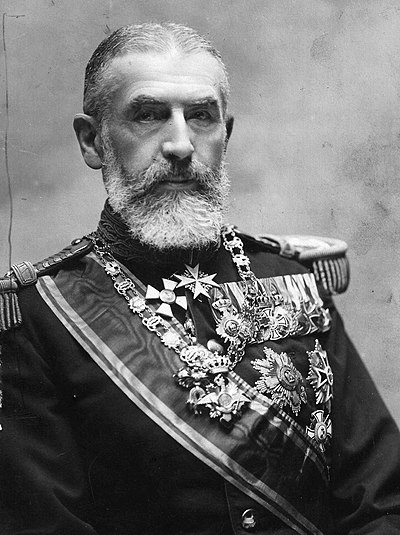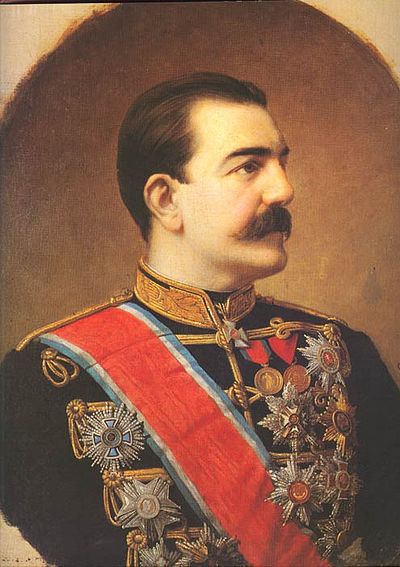On 12 April 1877, Romania gave permission to the Russian troops to pass through its territory to attack the Turks. On 24 April 1877 Russia declared war on the Ottomans, and its troops entered Romania through the newly built Eiffel Bridge near Ungheni, on the Prut river, resulting in Turkish bombardments of Romanian towns on the Danube. On 10 May 1877, the Principality of Romania, which was under formal Turkish rule, declared its independence.[23]
At the beginning of the war, the outcome was far from obvious. The Russians could send a larger army into the Balkans: about 300,000 troops were within reach. The Ottomans had about 200,000 troops on the Balkan peninsula, of which about 100,000 were assigned to fortified garrisons, leaving about 100,000 for the army of operation. The Ottomans had the advantage of being fortified, complete command of the Black Sea, and patrol boats along the Danube river.[24] They also possessed superior arms, including new British and American-made rifles and German-made artillery.
In the event, however, the Ottomans usually resorted to passive defense, leaving the strategic initiative to the Russians, who, after making some mistakes, found a winning strategy for the war. The Ottoman military command in Constantinople made poor assumptions about Russian intentions. They decided that Russians would be too lazy to march along the Danube and cross it away from the delta, and would prefer the short way along the Black Sea coast. This would be ignoring the fact that the coast had the strongest, best supplied and garrisoned Turkish fortresses. There was only one well manned fortress along the inner part of the river Danube, Vidin. It was garrisoned only because the troops, led by Osman Pasha, had just taken part in defeating the Serbs in their recent war against the Ottoman Empire.
The Russian campaign was better planned, but it relied heavily on Turkish passivity. A crucial Russian mistake was sending too few troops initially; an expeditionary force of about 185,000 crossed the Danube in June, slightly fewer than the combined Turkish forces in the Balkans (about 200,000). After setbacks in July (at Pleven and Stara Zagora), the Russian military command realized it did not have the reserves to keep the offensive going and switched to a defensive posture. The Russians did not even have enough forces to blockade Pleven properly until late August, which effectively delayed the whole campaign for about two months.
